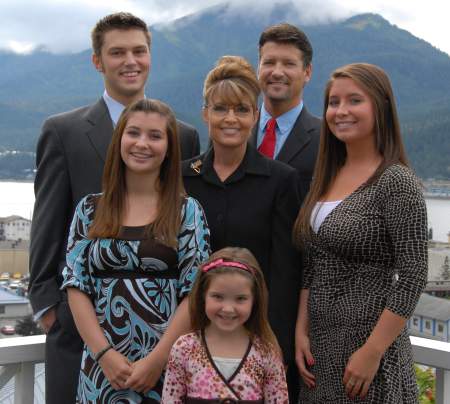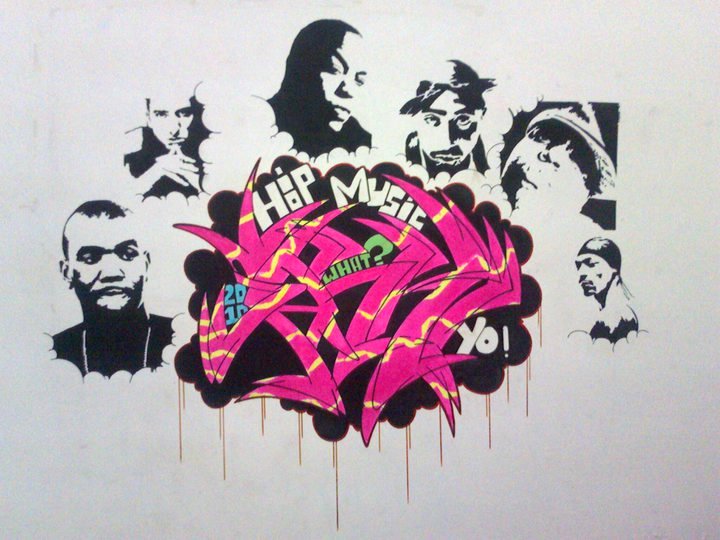
A place that many consider a “post-conflict” society, Northern Ireland, is a Gordian knot of ideology further entangled through the problematic limbo customary of the road to peace. Never has the pathway to peace been a linear one—not in Bosnia, not in Rwanda, and not in Northern Ireland. Following a period characterized by ethno-nationalistic violence, known as The Troubles, the peace process consists of fluctuating detours of resurgent ideologies. Whether practiced or rallied against, the sectarian ideology is so thoroughly entrenched within Northern Ireland’s borders that an armistice between paramilitaries is not the be all, end all of The Troubles.
In Northern Ireland, the term “post-conflict” carries a daunting weight, as it lacks a palpable definition, thus whitewashing both the decades of sectarian divide and the resulting multipolar peace treaty known as the Good Friday Agreement.
Since the conflict has “officially” ended, what does this mean for a society that is “post-conflict”? Does this mean all former sectarian thoughts have evaporated from the minds that they formerly occupied? Does this mean that risk of a sectarian rebirth is beyond reach? Northern Ireland is still in its incubatory stage in the peace process; it must be monitored and nurtured to ensure a peaceful and stable socio-political climate, not mislabeled and overlooked.
The complexity of sectarianism in Northern Ireland extends back as far as the Battle of the Boyne in 1690, a victory still celebrated by Northern Ireland’s Protestant community every July 12th. This turning point marks the day Protestant King William of Orange, who had been crowned sovereign of England, Scotland, and Ireland, defeated his uncle and father-in-law, the deposed Catholic King James II. The victory not only sent the Catholic king into exile, but also resulted in the establishment of the Protestant Plantation of Ulster. The original Gaelic-speaking Catholic residents were ushered out of their homelands towards the infertile coasts, leaving the central farmland available for Protestant English usage.[1]
In 1921, the Government of Ireland Act came into effect, officially partitioning Ireland, and preventing the need for the Protestant Ulster community to fight against any possible Irish home rule that could dismantle the English settlements. The new six-county Northern Ireland was under control of the United Kingdom, further rallying the recently created Republican and Loyalist paramilitaries. The most prominent — and in this particular case study — the most dangerous for each side respectively, were the Irish Republican Army (IRA) and the Ulster Volunteer Force (UVF), both recognized terrorist organizations in the UK.[2] On the Emerald Isle, Republicans encapsulate those with a more violent approach to traditional Nationalist ideology, both of which believe there should be a united Ireland not controlled by the British Crown. Alternatively, those branded as Loyalists are deeply espoused to Unionist ideology, willing to use violence to ensure Northern Ireland remains part of the UK.[3]
Throughout the years of The Troubles, these paramilitaries and their splinter organizations were collectively responsible for over 3,600 deaths and thousands of more injuries. April 10, 1998 marked a day in which a monumental multiparty agreement was reached, the Good Friday Agreement. This is an agreement internationally recognized to this day for being one of the most successful peacekeeping treaties. Yet the last killings of The Troubles were not over. The most lethal of bombings throughout the entire Northern Irish conflict occurred on August 15th of that same year in Omagh by the Real IRA, a splinter group with the goal of halting the momentum of the peace process that formed after the IRA declared an armistice in 1994. This bomb killed 29 and injured over 200, but aided in the push for peace as such fatal devastation projected the necessity to end the violence.[4] The attack prompted responses from a majority of fellow Republican organizations, including the political arm of the IRA, Sinn Féin, and the Irish National Liberation Army (INLA). Party leader Martin McGuinness labeled the act as “appalling” and the INLA declared a ceasefire seven days after the bomb.[5][6]
The Troubles marked the time from 1968 to 1998 that was characterized by a cultural violence, as defined by Johan Galtung, a leading founding scholar of peace and conflict studies. There is an elitism and ethnocentrism that exists in the minds of the dissident citizens from both sides who use the justification of fighting for one’s community to rationalize structural violence.[7]
The previous analysis may be valued within the minds of a conflict studies discourse community, but it reflects the troublesome lack of emotional recognition necessary to educate and reform a previously conflict strewn society. This form of reflection, a “post-conflict” stew of –isms and history, opens the door for the ideological strife between the Protestants and Catholics to be romanticized as the personal devastation suffered during The Troubles is overlooked.
The two largest periods of recruitment for the IRA occurred following the Bloody Sunday massacre in Derry/Londonderry, and the death of Provisional IRA martyr for the Republican cause, Bobby Sands, after his hunger strike. A majority of those joining the paramilitary forces at the time were teenagers, those with malleable minds that were easily shaped by sectarianism. They operated with textbook terrorist mentality—under the belief they were not terrorists, but revolutionaries, fueled purely by their unshakeable ideology. Unfortunately, those teenage minds continue to be shaped in such a fashion today.
Teenagers in Northern Ireland today were only alive for the tail end of The Troubles; some have only lived in a post-Troubles world. Although there are no constant deaths and no daily explosions, their minds are being shaped by those who were alive, and the continuation of their sectarian beliefs.
As previously mentioned, romanticism of the cause develops in the minds of these youths, as they learn the colors, flags, and different neighborhoods of their communities, among the other 101 non-verbal ways in which Catholics and Protestants differ. A breeding ground for sectarianism exists as contemporary youth in Northern Ireland are old enough to understand the historical timeline of events, but too young to comprehend the heartache associated with The Troubles. They learn what it means to represent one’s community and to rally behind a cause without having experienced the destruction associated with such thoughts.
Northern Ireland’s pathway to peace presents a fork in the road for the next generation—one can either follow the route of integration and education or instead reject the peace process and risk reclamation of a sectarian divided society. There are currently 22,000 students pursuing education within a religiously integrated administration compared to the 28 students 30 years ago.[8] All the while, peace and reconciliation centers, such as the Corrymeela Community, are making leaps and bounds toward providing a safe space for the facilitated breakdown of cross-community barriers.
However, most recently, Northern Ireland has been documented for its increased sectarianism; most notably, the flag protests that began in December 2012 after Belfast City Council voted to limit the number of days the Union Flag would fly. Now flying for only18 days of the year instead of the usual 365, predominantly for royal birthdays, the decision was heavily opposed by Unionist and Loyalist communities.[9] The frontlines of these protests were filled with Northern Irish youths, and arrests were made of teenagers as young as 13 years old—too young to have even been alive during The Troubles.[10] The hopes of community outreach within Belfast are restricted, as 99 peace walls still remain dividing the various Protestant and Catholic communities. Originally built to maintain a form of peace between Loyalist and Nationalist communities in Belfast, these walls now serve as barriers of prevention rather than protection, as they maintain separation in a time when integration is imperative.[11]
One cannot ask the diverse Irish population to ignore their sectarian history filled with cultural violence, but reconciliation is a major part of the peace process. The more protests over flags, the more peace walls erected, and the more sectarian romanticism perpetuated throughout Northern Ireland, the further the country veers off the pathway to peace. It’s called a peace process for a reason—it takes time.
Peter Calabrese
Political Science and International Affairs ’15
References:
[1] “The Battle of the Boyne.” BBC History, accessed February 20, 2014, http://www.bbc.co.uk/history/events/battle_of_the_boyne.
[2] John Darby, “Conflict in Northern Ireland: A Background Essay,” in Facets of the Conflict in Northern Ireland, ed. Seamus Dunn. (Hampshire, Macmillan Press Ltd., 1995).
[3] “The Troubles.” BBC History, accessed February 18, 2014, http://www.bbc.co.uk/history/troubles.
[4] “1998: Dozens die in Omagh bombing.” BBC On This Day, accessed February 20, 2014, http://news.bbc.co.uk/onthisday/hi/dates/stories/august/15/newsid_2496000/2496009.stm.
[5] “Omagh bombing kills 28.” BBC News, last modified 16 August 1998, http://news.bbc.co.uk/2/hi/events/northern_ireland/latest_news/152156.stm.
[6] “Irish National Liberation Army (INLA).” Terrorist Organization Profiles, accessed February 18, 2014, http://www.start.umd.edu/tops/terrorist_organization_profile.asp?id=54
[7] Galtung, Johan. “Violence, Peace, and Peace Research.” Journal of Peace Research 6, no. 3 (1969): 167-91.
[8] “The Way Forward.” Northern Ireland Council for Integrated Education (NICIE), accessed February 20, 2014, http://www.nicie.org/about-us/integrated-education/the-way-forward/.
[9] “Designated days for Union Flag flying.” Department for Culture, Media, & Sport, last modified 27 February 2013, https://www.gov.uk/designated-days-for-union-flag-flying.
[10] “Belfast flag protests: Three teenagers charged.” BBC News Northern Ireland, last modified 9 December 2012, http://www.bbc.co.uk/news/uk-northern-ireland-20657268.
[11] Henry McDonald, “Belfast ‘peace walls’ will come down only by community consent –minister,” The Guardian, last modified 3 December 2013, http://www.theguardian.com/uk-news/2013/dec/03/belfast-peace-walls-dismantled-community-consent-minister.


